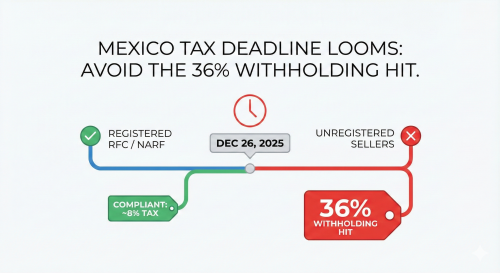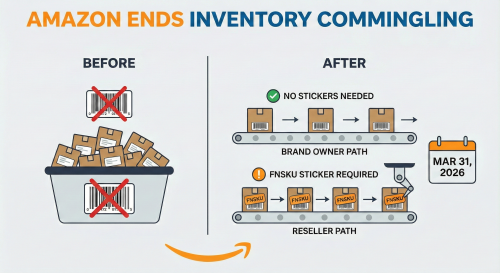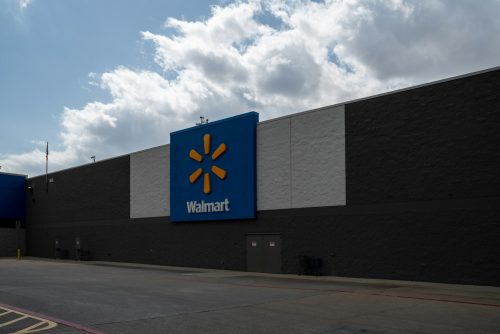
Amazon Prime Day is one of the most anticipated events on the e-commerce calendar, providing sellers with a significant opportunity to increase sales and attract new customers.
However, once the frenzy of Prime Day passes, sellers are faced with the important task of replenishing their inventory without impacting subsequent sales, and effective post-Prime Day replenishment requires strategic planning and execution to ensure that inventory levels are optimized, costs are minimized, and customer satisfaction remains high. And consideration needs to be given to designating strategic plans to sustain and drive sales, taking advantage of unique opportunities to capitalize on the momentum generated during sales events.
This article explores strategies to achieve optimal replenishment and seller benefit after Amazon Prime Day to ensure continued sales and uptime operations to enhance your brand awareness and sales.
Amazon Prime Day can lead to a substantial surge in sales, depleting inventory levels and creating potential challenges for subsequent replenishment. The key is to balance the need for restocking with the demands of ongoing sales, avoiding stockouts or overstocking that could negatively impact business performance. Here are some strategies to achieve this balance effectively:
Analyze Sales Data and Trends
Evaluate Prime Day Performance
Start by analyzing your Prime Day sales data to understand which products performed well and which ones did not meet expectations. Identify the top-selling items, customer preferences, and any patterns in purchasing behavior. This analysis will help you make informed decisions about which products to prioritize for replenishment.
Forecast Future Demand
Use historical sales data, market trends, and predictive analytics to forecast future demand for your products. Consider factors such as seasonality, upcoming promotions, and market conditions. Accurate demand forecasting will enable you to plan your inventory needs more effectively and avoid overstocking or stockouts.
Prioritize Inventory Replenishment
Focus on High-Demand Products
Prioritize replenishing high-demand products that contributed significantly to your Prime Day sales. Ensure that these products are restocked promptly to capitalize on continued customer interest and prevent potential stockouts.
Optimize Safety Stock Levels
Maintain appropriate safety stock levels to buffer against unexpected demand fluctuations or supply chain disruptions. Safety stock acts as a cushion, ensuring product availability even when actual demand exceeds forecasts.
Implement Just-In-Time (JIT) Inventory
Adopt Just-In-Time (JIT) inventory practices to minimize holding costs and reduce the risk of obsolescence. JIT ensures that inventory is replenished only when needed, optimizing storage space and cash flow.
Streamline Supply Chain Operations
Strengthen Supplier Relationships
Collaborate closely with your suppliers to ensure timely and efficient replenishment. Communicate your inventory needs and forecasted demand to your suppliers, and work together to address any potential challenges. Building strong supplier relationships can lead to better terms, faster lead times, and improved reliability.
Optimize Order Lead Times
Reduce order lead times by optimizing your procurement processes and leveraging technology. Automated order management systems can help streamline ordering, track shipments, and ensure timely deliveries.
Diversify Your Supplier Base
Consider diversifying your supplier base to mitigate the risk of supply chain disruptions. Having multiple suppliers for critical products can provide greater flexibility and resilience in your supply chain.
Enhance Warehouse and Inventory Management
Implement Advanced Inventory Management System (IMS)
Utilize an advanced Inventory Management System (IMS) to gain real-time visibility into stock levels, track inventory movements, and automate replenishment processes. An IMS can help you optimize inventory levels, reduce carrying costs, and improve order fulfillment accuracy.
Optimize Warehouse Layout
Ensure that your warehouse layout is optimized for efficient picking, packing, and shipping. Arrange high-demand items in easily accessible locations and implement logical flow paths to minimize travel time and congestion.
Conduct Regular Inventory Audits
Perform regular inventory audits to verify stock levels and identify discrepancies. Regular audits help maintain inventory accuracy and provide valuable insights into inventory performance.
Sellers have a unique opportunity to capitalize on the momentum generated during sales events.While replenishing inventory is crucial, there are several other strategic moves that sellers can make to sustain and boost their sales. Here are some additional angles to consider:
Strengthen Marketing and Advertising Efforts
Retargeting Campaigns
Leverage Retargeting: Implement retargeting campaigns to reach customers who visited your listings or added items to their cart but did not complete the purchase. Retargeting can help convert these potential buyers into actual customers.
Use Dynamic Ads: Utilize dynamic ads that showcase products customers have shown interest in. Personalizing ads based on browsing behavior increases the likelihood of conversion.
Email Marketing
Follow-Up Emails: Send follow-up emails to customers who made purchases during Prime Day. Thank them for their purchase, offer personalized recommendations, and provide incentives for future purchases.
Promotional Campaigns: Launch email campaigns with exclusive post-Prime Day offers, discounts, or bundle deals. Highlight new arrivals or best-sellers to attract repeat customers.
Optimize Listings and Enhance Content
Listing Optimization
Update Listings: Refresh your product listings with new images, updated descriptions, and enhanced keywords. Ensure that your listings are optimized for search visibility and conversion.
A/B Testing: Conduct A/B testing on different elements of your listings, such as titles, bullet points, and images, to determine what resonates best with your audience.
Enhanced Brand Content (EBC)
Utilize EBC: If you are enrolled in Amazon’s Brand Registry, use Enhanced Brand Content to create rich, visually appealing product descriptions with images, text, and videos. EBC can improve conversion rates by providing customers with a better understanding of your product.
Leverage Social Media and Influencer Marketing
Social Media Engagement
Promote Products: Use social media platforms to promote your products and engage with your audience. Share user-generated content, customer reviews, and behind-the-scenes looks at your business.
Run Contests and Giveaways: Organize contests and giveaways to increase brand visibility and attract new followers. Encourage participants to share your content, expanding your reach.
Influencer Collaborations
Partner with Influencers: Collaborate with influencers who align with your brand values and target audience. Influencers can help amplify your message and drive traffic to your listings.
Sponsored Content: Work with influencers to create sponsored content that showcases your products in an authentic and relatable manner.
Plan and Execute Seasonal Campaigns
Seasonal Promotions
Plan Ahead: Identify upcoming holidays, events, or seasons that are relevant to your products. Plan promotions and marketing campaigns around these occasions to capitalize on increased consumer spending.
Create Bundles: Offer product bundles or limited-time offers that cater to seasonal needs. Bundling complementary products can increase average order value and provide added value to customers.
Enhance Customer Experience and Loyalty
Customer Service Excellence
Prompt Responses: Ensure that customer inquiries and issues are addressed promptly and professionally. Excellent customer service can lead to positive reviews and repeat business.
Personalized Communication: Personalize your communication with customers by addressing them by name and tailoring messages to their preferences and purchase history.
Loyalty Programs
Reward Loyalty: Implement a loyalty program that rewards repeat customers with exclusive discounts, early access to new products, or special offers. Loyalty programs can encourage repeat purchases and foster long-term customer relationships.
Solicit Feedback: Regularly solicit feedback from your loyal customers to understand their needs and preferences. Use this feedback to continuously improve your products and services.
While Amazon Prime Day offers a significant boost in sales, the period following the event presents an opportunity to sustain and build on that momentum. By analyzing customer data, strengthening marketing efforts, optimizing listings, leveraging social media, planning seasonal campaigns, and enhancing customer experience, sellers can ensure continued success and growth. Partnering with a trusted logistics provider like LinkTrans can further streamline your operations, allowing you to focus on strategic initiatives that drive sales and customer satisfaction. By implementing these strategies, sellers can navigate the post-Prime Day landscape with confidence and achieve sustained success in the competitive e-commerce market.








